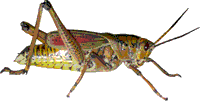Entomology Collections, Miscellaneous
Date of this Version
1964
Abstract
When contact sprays are applied for cockroach control, they are dispersed with the expectation that they will kill the insects actually in the room at that time but will have little if any effect on those that enter after the spraying has been completed. Residual sprays, which are applied to stationary objects such as walls or furniture, have the added advantage of also being toxic to those cockroaches that contact the treated surfaces at a later date. If the residual treatments actually kill a greater number of insects, they also may select for resistance at a much higher level and cause such resistance to develop more rapidly. In an effort to determine whether residual sprays produce resistant strains more readily than space sprays, or vice versa, a series of tests was conducted under simulated natural conditions in which German cockroaches, Blattella germanica (L.), were exposed to chlordane treatments.


Comments
Published in The Florida Entomologist, Vol. 47, No. 2 (Jun., 1964), pp. 109-111.